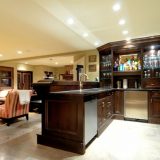How to Make the Color Beige?
Beige is a soft, neutral shade that can add a soothing, earthy feel to any space. As a mix between brown and white, beige has an understated elegance that works well in various design styles. Unlike bolder colors, beige creates a calming backdrop that allows other furnishings and accents to take center stage. Let’s learn how to make the color beige.
While many paint companies offer beige paints, finding the perfect neutral beige can be tricky. Undertones ranging from yellow to brown to gray can affect the look of beige paints and alter how they complement other colors. Rather than relying on store-bought paint alone, learning how to mix custom beige tones gives you complete control over the finished color.
The Meaning and Symbolism of Beige
Learning how to mix beige paint and fabrics, helps to understand what beige represents. Beige contains light and dark elements as a blend of white and brown. This duality imbues beige with symbolic meaning about finding balance.
Beige is associated with neutrality, dependability, and conservatism in color psychology. Beige is practical and subtle, creating a solid foundation without overpowering. It brings to mind things that are natural, organic, and wholesome.
Beige’s association with neutrality and compromise makes it a safe choice for design. However, some consider beige bland if used excessively. The trick is using beige as a base while adding interest to other decorative elements.
Mixing Beige Paint

When flipping through paint swatches, you’ll discover dozens of beige paint colors from major brands. Paint names like “latte,” “mushroom,” “fawn,” and “biscuit” aim to convey the perfect neutral beige. However, the beige you envision likely differs from these off-the-shelf shades.
Mixing a custom beige paint gives you control over the tone and intensity. The process requires patience and a discerning eye, but the payoff is finding your ideal beige.
Follow these steps when mixing beige paint:
Step 1: Choose a Base Color
Beige paint can be mixed from either white or brown bases. Keep in mind results will differ depending on your starting point.
- White base beiges have a softer, more muted appearance. They maintain more of the white base as they lighten the brown.
- Brown base beige allows more of the brown tone to show through. They appear richer and warmer.
To make an intentionally soft beige, use white as your base color. For a deeper, more saturated beige, start with a brown base.
Step 2: Add Small Amounts of Brown or White
Begin with a pure white or brown base paint. Add your secondary color gradually, no more than a teaspoon. Thoroughly blend each addition to achieve an even tone.
If your base is white, stir in drops of brown paint. Go slowly, as a little brown pigment goes a long way. For a brown base, incorporate white paint in small increments.
Adding too much secondary color at once can overpower the base, resulting in a drastically different shade. By gradually building up the beige mix, you can better control the result.
Step 3: Adjust the Undertone
Beige paints use brown and white pigments to create an overall neutral tone. However, they also contain subtle undertones that can make the beige appear warmer, more relaxed, or more muted. Adjust undertones with tertiary colors:
- To add a warm, yellow undertone, stir in a small amount of yellow or ochre paint. This gives a warm sand color, green, or for a cool, gray undergo for a cool, gray undertonenepurple. This results in a beige with a subtle slate-like appearance.
- To mute or neutralize undertones, add a touch of black paint. A little goes a long way to bring down intensity.
Step 4: Repeat Steps 2-3 Until Satisfied
Mixing beige paint takes an iterative approach. Make small paint additions, blend well, and evaluate if the color matches your vision. The undertone can shift as you add more pigment, so you may need to adjust.
Don’t rush the process. Repeat steps 2 and 3 until achieving the perfect custom beige. Allow the paint to dry completely before making final assessments. Natural lighting is best for accurate color.
Step 5: Record Ratios for Consistency
Matching beige paint from batch to batch can be frustrating. When you have the perfect custom beige, record the quantities used so you can recreate it.
Writing down mixing ratios lets you make large batches for big paint jobs. Store leftovers in sealed containers to use for touch-ups down the road.
DIY Beige Fabric Dye
In addition to paint, fabric dye allows you to color textiles, upholstery, and more into fresh beige shades.
Follow this method to hand-mix fabric dye for custom beige results:
Step 1: Choose Your Base Fabric
Like paint, mixing beige fabric starts with selecting a white or brown base material. Optimal bases are:
- White cotton, linen, or other light-colored, plain-woven fabric
- Unfinished brown cotton, burlap, muslin, or similar tight-weave fabric
Stay away from fabrics treated with stain-resistant coatings, as these can interfere with dye absorption. Pre-wash your fabric to remove sizing compounds.
Step 2: Mix the Dye Bath
For the dye bath, you’ll need:
- Fabric dye in brown and either yellow or green shades
- Large container for mixing and dyeing
- Measuring cups and spoons
- Wooden spoon for stirring
- Rubber gloves and apron
Fill your tub with boiling water. Measure out dye powder according to package directions based on your volume of water.
Step 3: Gradually Add Colors
Start by adding a base of brown or green dye powder. Blend well before introducing the secondary dye color. Add small amounts of the contrasting color, blending thoroughly.
For a brown base, stir in green or yellow dye drops to reach your ideal beige tone. If you used a white base fabric, add in brown dye gradually.
Mix thoroughly after each addition to gauge color change. Keep adjusting until you have a custom beige dye bath.
Step 4: Submerge and Agitate Fabric
Wear gloves, and fully submerge your prepared fabric in the beige dye bath. Push and stir fabric frequently for even absorption of dye.
Soak fabric for 30-60 minutes until the beige dye has fully saturated the material. Longer soak times yield more intense hues.
Step 5: Rinse and Dry
Rinse the dyed fabric with cold water until the runoff is clear. Hang or lay flat to dry thoroughly before assessing the final color. Repeat the dyeing process for uneven results until the beige tone is uniform.
Your custom mixed beige fabric dye delivers a unique, hand-crafted color that store-bought textiles can’t match. Tweak dye ratios to find your perfect soft, neutral beige.
Complementary Color Schemes with Beige
A benefit of beige is its versatility in working and fantastic color schemes. Beige’s neutrality lets it bridge color families, making it an ideal background shade.
Here are recommended palette combinations to allow beige to enhance other colors:
Beige with Earth Tones
Shades like mocha brown, taupe, and terra cotta have an inherent affinity with beige. The muted, natural earth tones allow beige to retain its softness.
This cozy color scheme is organic and perfect for rustic, farmhouse, or Southwestern rooms. Use beige on walls with earth tones in furnishings and decor.
Beige with Pastels
I muted jewel-tone pastels like lavender, mint, buttercup, and sky blue pop against a beige backdrop. The interplay between dusty pastels and beige creates a charming, vintage aesthetic.
Use beige for large surfaces like walls. Then, implement pastel accents in tiles, artwork, and decor items.
Beige with Bold Primaries
While beige is subtle, it provides enough contrast for richer shades like cobalt blue, crimson, and emerald to stand out. The beige grounding prevents primaries from becoming overwhelming.
Combine beige with one vibrant primary shade throughout a modern or contemporary room. Use beige for most soft furnishings, reserving primaries for paint, tiles, and accents.
Beige with Metallics
The clean, neutrally beige complements metallics like bronze, copper, and champagne gold. Beige allows the sheen and depth of metals to shine as focal points.
Incorporate beige upholstery or rugs to soften and balance metallic furniture, lamps, vases, and mosaic tiles.
Techniques for Distressing Beige Paint

While plain beige has its charms, you can also manipulate painted finishes for added depth and dimension. Distressing techniques involve aging down beige paint to mimic a timeworn patina. Here are some popular methods for distressing beige paint finishes:
Sanding
One of the easiest ways to distress paint is by sanding it down. Use fine-grit sandpaper to rub away the topcoat of beige paint. Focus on areas that would naturally see wear, like edges and corners. The sanded areas reveal the wood tone underneath, giving a weathered look.
Chalk Dust Layering
Dusting beige paint with chalk creates a matte, opaque finish. Apply your topcoat of beige paint and let dry thoroughly. Then, use white or gray chalk to mark the surface, concentrating on high-touch areas. Seal with a matte varnish once satisfied with the chalky patina.
Crackle Effects
Crackling medium under beige paint mimics alligatoring cracks from sun damage. Paint your base a beige color and let it dry before brushing on the crackle agent. Apply a top coat in a contrasting color and watch cracks form as it dries. Consider using aged white or brown for the top layer.
Color Washing
Create subtle staining on beige paint using colored glazes. Mix paint with glazing liquid in a shade like coffee, slate blue, or mustard. Wipe the glaze over cured beige paint with a rag, letting color pool in the recesses. Soften edges by blotting with a paper towel.
Mottled Sponging
Cut or tear a natural sponge into random shapes. Dab it into gray, brown, or umber paint and dot it onto dry beige walls. Overlap dots for an organic, mottled effect. Use a rag to soften and blend edges if needed.
Beige Color Palettes for Painting Projects
Consider how the shade interacts with trim, ceiling, and accent colors when planning a wall paint project using beige.
Here are suggested three-color beige schemes for interior rooms:
Soft Browns Palette
- Walls: Custom beige with warm cocoa undertone
- Trim/Molding: Milk chocolate brown
- Ceiling: Extra white
The brown trim pops nicely against the beige walls. White ceiling prevents the darkening of the space.
Crisp Grays Palette
- Walls: Custom beige with an incredible slate undertone
- Trim/Moldings: Light gray
- Ceiling: Bright white
Gray trim complements the gray undertones of the beige walls. The white ceiling illuminates the cool color scheme.
Vintage Whites Palette
- Walls: Custom beige dental shade
- Trim/Moldings: Antique white
- Ceiling: Swiss coffee off-white
Multiple off-whites provide subtle variation. The antique white trim plays up beige walls.
Earthy Neutrals Palette
- Walls: Custom beige with a warm ochre undertone
- Trim/Moldings: Muted sage green
- Ceiling: Flat white
Green trim coordinates with the beige wall’s warm, earthy tones. The crisp white ceiling prevents heaviness.
Decorating with Beige
Beige lends itself well to a clean, serene decorating aesthetic.
Here are tips for beautifully furnishing and accessorizing beige rooms:
Fabrics and Textiles
Upholster sofas and chairs in natural linen, cotton, or hemp for an organic feel. Wool or cotton area rugs in beige or oatmeal tones prevent busyness underfoot. Choose softly draping curtains in unbleached muslin or creamy faux silk.
Furniture
Select furniture in wood stains like oak, walnut, and mahogany to coordinate with beige’s earthy essence. Painted wood pieces look sharp against beige walls when finished in complementary ivory, tan, brown, or slate tones.
Art and Accessories
Don’t over-accessorize, or beige rooms can become bland. Seek art and decor in contrasting bold colors and metallics to create natural focal points. Ceramics, glassware, lamps, and greenery should provide splashes of contrast.
Flooring
Hardwood floors suit beige color schemes in oak, hickory, or chestnut stains. Tile or stone in honed finishes or sandy natural colors complements beige nicely. Use large beige wool rugs to define seating areas.
Conclusion

Finding your ideal beige for walls or fabrics takes experimentation. But with the correct base and mix of pigments, you can create a custom beige shade to fit your needs—test samples before committing to get the undertone and intensity precisely right. Once you discover your perfect beige, embrace it as the neutral but warm and welcoming color it is. Use beige’s flexibility to anchor a variety of color schemes or keep things uncomplicated on its own. However you incorporate this natural, all-purpose color, beige will infuse your space with organic coziness and calming simplicity.
FAQs
What colors make beige when mixing paint?
Beige paint comes from combining brown and white pigments. Add a little yellow, green, or blue to adjust the undertone temperature.
Does beige go with grey?
Yes, soft beige works well with light to mid-range gray tones. The subtle contrast between them creates an elegant, neutral room.
What are the undertones of beige?
Beige can take on a warm yellow, cool gray, muted taupe, or neutral peachy undertones depending on pigments. Undertones impact how beige coordinates with other colors.
Is beige timeless?
Beige is a perennial color choice that comes in and out of vogue. Its versatility as a neutral backdrop helps maintain beige’s popularity across eras and design trends.
What are beige analogous colors?
Beige works seamlessly with analogous earth tones like cream, tan, taupe, sand, oatmeal, toast, stone, flax, biscuit, and khaki. Keeping to this color family creates serene spaces.
















